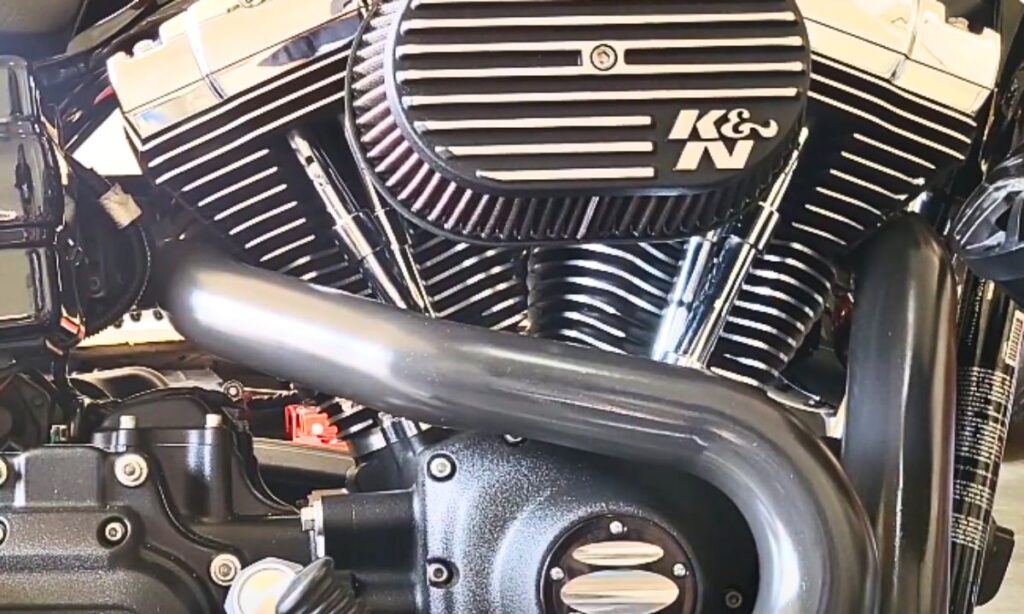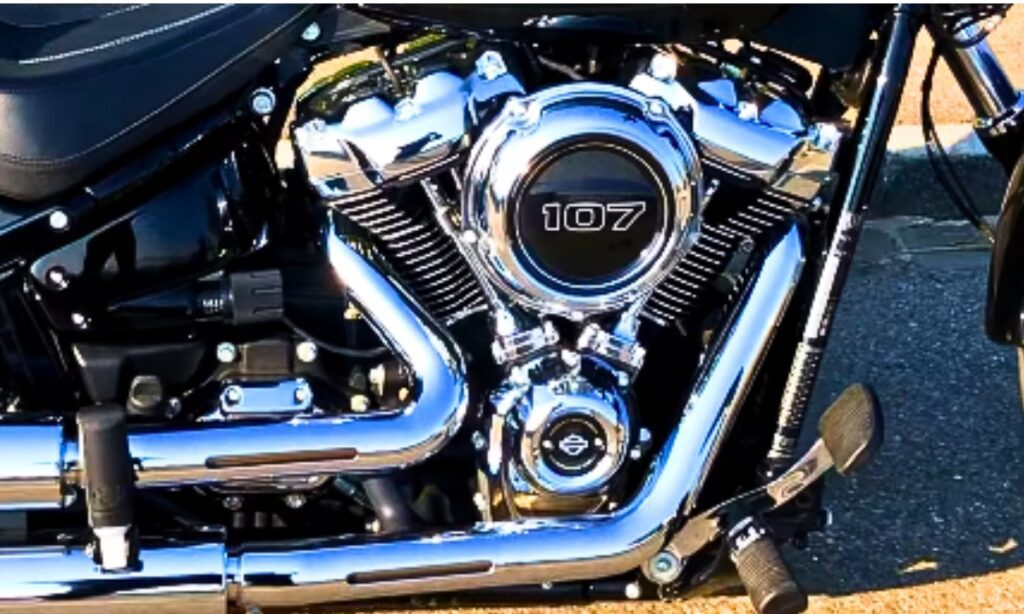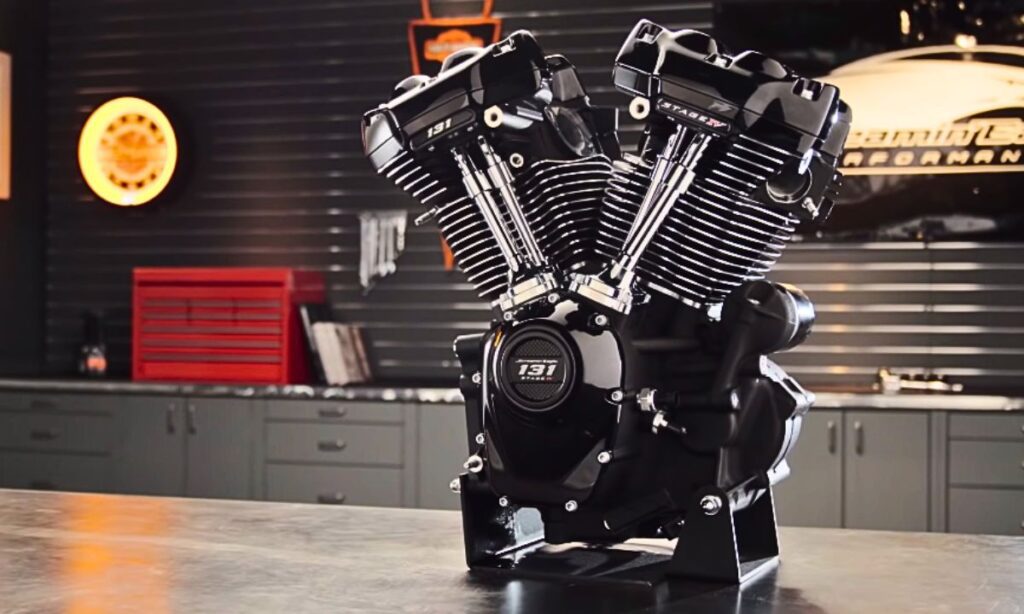Harley Davidson’s 110 engine, known as the Screamin’ Eagle, has been touted for its power and performance among motorcycle enthusiasts.
However, like any other engine, it is not without its set of problems.
In this article, we will explore these issues, offering insight into common difficulties experienced by riders.
We will also dive into the solutions for these issues so you can easily fix them.
Harley Davidson 110 Engine Problems
However, like any other mechanical component, it has its fair share of issues that can impact the bike’s overall performance.
Common concerns range from excessive heating, noise, and vibration to more serious problems like oil leaks and premature wear of internal components.

1. Oil Leaks
Harley 110, while known for its power and performance, has been associated with oil leakage problems.
This issue can be caused by a variety of factors, such as degraded gasket, loose oil filter, or overfilled oil tank.
Oil leaks can be spotted by the small pools of oil that form underneath the motorcycle or by streaks and splatters on the bike’s parts and body.
The oil might smell burnt or might be mixed with debris, which is a clear sign that the motorcycle needs immediate attention.
If you notice an oil leak, it’s vital to address it promptly to prevent damage to the engine.
The exact remedy will depend on the source of the leak. For instance, a degraded gasket needs to be replaced, while a loose oil filter needs to be properly fastened.
If the oil tank is overfilled, you need to drain the excess oil to reach the recommended level.
2. Complications from Lifter Failure
The hydraulic lifters, small elements responsible for activating the engine’s intake and exhaust valves, can malfunction, leading to severe complications in the engine’s performance.
This failure can be recognized by a distinct ticking noise, increased engine vibration, or a noticeable decrease in power output.
When a lifter fails, it won’t properly ‘lift,’ causing the valves to be open and close at incorrect timings.
This can lead to engine misfires, irregular idle, and reduced fuel efficiency.
In worst-case scenarios, lifter failure may even result in significant engine damage, as improper valve timing could cause the valves to collide with the pistons.
There are a few preventative measures you can take to avoid lifter failure.
Regular oil changes with high-quality oil can help keep the lifters lubricated and functioning properly.
However, ensuring that the engine is not overheated will help extend the lifter’s lifespan, as excessive heat can cause the lifter’s components to wear out more quickly.
In the event of lifter failure, it’s essential to address the issue as soon as possible to prevent further engine damage.
3. Excessive Fuel Consumption
This issue can be due to a malfunctioning fuel injector, leaking fuel lines, or an overly rich air-fuel mixture.
A malfunctioning fuel injector can cause the engine to consume more fuel than necessary.
This is because the injector, which is designed to spray a specific amount of fuel into the combustion chamber, may start to leak or disperse a larger amount of fuel if it fails.
Leaking fuel lines is another common cause of excessive fuel consumption. Check the lines meticulously for any signs of leaking.
If you notice a strong smell of gasoline or wet spots beneath your motorcycle, it could indicate a leak that needs immediate attention.
An overly rich air-fuel mixture can also cause the engine to use more fuel. The engine control unit (ECU) is designed to create the ideal mixture of air and fuel for combustion.
If the ECU does not function properly, it can create an overly rich mixture, thus consuming more fuel. A tune-up or an ECU upgrade can potentially resolve this issue.
4. Challenges of Overheating
Like any motorcycle engine the 110 have also faced the overheating issue, particularly during traffic congestion or long rides in warmer climates.
Overheating can lead to numerous mechanical problems, such as engine knock, a loss of power, and, in severe cases, engine failure.
The root of the problem often lies in the air-cooled design of the engine.
While this design is part of Harley Davidson’s classic aesthetic, it doesn’t provide sufficient cooling, particularly in hot conditions or when the bike is idling.
You can take several steps to mitigate these issues. Firstly, consider investing in a quality oil cooler, which can help lower overall engine temperature.
Secondly, synthetic oils can provide better heat resistance and improved engine performance.
Finally, routine maintenance and regular oil changes are crucial to keep the engine running smoothly and reduce the risk of overheating.
5. Problems with Piston Slap
This problem arises when the piston moves sideways inside the cylinder, causing an annoying knocking or slapping sound.
This is largely due to the design of the engine, which allows for a slight amount of “play” or loose fit between the piston and the cylinder wall.
The cause of Piston Slap often lies in the engine’s thermal expansion. In the Harley 110 engine, the piston is smaller than the cylinder when at room temperature.
However, when the engine heats up during operation, the piston expands more than the cylinder, causing it to hit the cylinder walls and create a slapping sound.
Unfortunately, a Piston Slap can lead to increased wear on the piston and cylinder walls over time, potentially resulting in more serious engine damage.
It is crucial to address this issue promptly to prevent further complications.
Fixing the Piston Slap involves a thorough engine inspection, determining the extent of the wear, and replacing the affected parts if necessary.
Sometimes, it needs to replace the entire piston or cylinder, which can be a costly fix.
6. Engine Misfiring
This could occur when an insufficient amount of fuel is combusted in one or more of the engine’s cylinders.
This can lead to several problems, such as reduced fuel efficiency, increased emissions, and potential damage to the engine’s components.
The misfiring problem may be caused by faulty spark plugs, the fuel injection system, which might not be delivering the right amount of fuel to the cylinders.
It could also be due to a damaged ignition coil, which could hinder the spark from reaching the cylinder.
The first step to diagnosing and fixing this issue is to inspect your spark plugs, as this is often the most common cause.
If the spark plugs are in good condition, the next step is to look at the fuel injection system and ensure that it is functioning correctly.
If these potential causes are ruled out, the ignition coil should be the next focus of your investigation.
7. Timing Chain Issues
The Harley Davidson 110 engines have been known to encounter timing chain issues, which can lead to inefficient engine performance and potential damage.
The timing chain, an integral part of the engine’s operation, synchronizes the engine’s valves with the pistons, ensuring that the engine operates smoothly and effectively.
The issue can arise when the timing chain begins to wear out or stretch. This can result in the engine misfiring, poor fuel efficiency, or noisy operation.
When these issues occur, it’s crucial to replace the timing chain. The process requires specialized knowledge and tools, but essentially, it involves removing the engine cover, detaching the old timing chain, and replacing it with a new one.
After the new chain is installed, it’s necessary to adjust the chain tension and ensure that the timing marks on the camshaft and crankshaft are properly aligned.

Tonmoy, the brains behind the influential motorcycle-focused website, TwoWheller.com, is a dedicated and passionate advocate for biking culture. Born and raised in a family of motorcycle enthusiasts, his love for two-wheeled transportation was ignited at an early age. His commitment to providing in-depth reviews and helpful tips for riders has established him as a respected figure in the motorcycle community.

